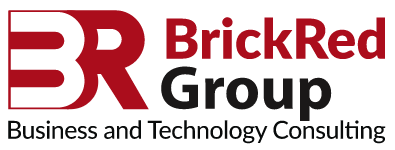
Recently, CSO Insights reported that 54% of projected transactions by sellers are never successful. The sales forecast is an area that depends on a long list of spreadsheets and instincts.
The main issue is that people devise personal presumptions that result in conflicting expectations and definitions. Furthermore, businesses use unreliable models to factor in every aspect that impact sales, leading to misguided sales predictions and numbers.
Unfounded sales predictions result in insufficient budgeting and improper planning of resources, which in turn, has a severe impact on the overall performance of the business, an act that destroys investor confidence in the company.
What is predictive analytics for sales and marketing?
SAS defines predictive analytics as the use of statistical information and automated formulas to forecast future events based on past data. The primary aim of predictive analytics is to examine past historical events to provide the best predictions or expectations of what will happen in the future.
In sales and marketing context, predictive analytics use historical data to predict which marketing techniques and approaches are likely to succeed. Hence, the analytical approach helps businesses make the right marketing decisions.
How does predictive analytics for sales and marketing work?
Predictive analytics depends on data to work efficiently. The more data you have, the more you will achieve an accurate prediction. Analysis thrives on both the internal and external data sources.
What is an internal source?
The internal source is information that is extracted from own media.
What is owned media?
This is when you create and control your channels such as a YouTube channel, blog, website, or social media accounts like Facebook or Twitter.
Analytical tools help to determine the relationship between information in the purchasing phase on owned media. It involves finding historical patterns of customer purchases and decisions made when making the final purchase.
What is an external source?
An external source comprises third party information that affects the purchasing decisions in one way or another. These sources may include social media channels, Google, and offline platforms.
Analytical tools take into account both internal and external factors in creating accurate sales projections.
Where does behavioral analysis come in?
Different analytical functions in sales and marketing require separate behavioral analysis. The same is true for predictive analytics. Demographic data is vital in this systematic approach, where behavioral information is extracted.
The tool records behavior information of users across different platforms including your website, offline events, apps, and campaigns. Also, it analyzes the relationship between different variables used to create patterns that show the final sale. Afterward, the marketers measure real-time data against the historical trends to develop a predictive formula that estimates the possibility of a user to convert.
What is the role of predictive analysis in marketing and sales?
Enhanced personalized messaging
Personalization is critical. Most companies find it hard to provide their customers with customized messages partly because they either do not have reliable data or sufficient data, which makes it hard to gain quick insights. For other businesses, personalization has yielded impressive results. However, the traditional technique is not reliable, that is why companies are now shifting to predictive tech.
Predictive analytics allows you to target specific individuals or groups when you are reaching out to customers, recommending products, cross-selling, or upselling. You can create customized messaging that resonates with your customers.
Optimize your marketing campaigns
Designing a marketing strategy that will not connect to customers or show interest in your brand is not profitable. The sales and marketing team can use predictive analytics to know their target audience, how much they are willing to spend, which product or service they want to buy, and so forth. This information can help the sales and marketing team create a personalized plan to achieve a higher conversion ratio. Let’s take Netflix for example; the company tracks user’s preferences such as the director, cast, and episodes for a given period. It uses this data to create film suggestions that resonate with its customers.
Get better insights
While business reports have been used for many years, they are quite limiting because companies tend to analyze things based on assumptions or dimensions such as sales per region or sales per product. Predictive analytics helps businesses look beyond what is already there. It allows you to run an analysis on multiple dimensions and only extracts crucial drivers.
Predict customer behavior more accurately
Customer intelligence is a crucial concept for marketers. The more you understand what your customers want, the easier it is to reach out to them with the right message.
Predictive analytics are guided by artificial intelligence and machine learning, which helps to predict the future behaviors of customers by analyzing patterns and identifying similar attributes among different variables in the data. For example, marketers and sales reps can use regression analysis to examine the correlation between past purchase behaviors of customers to analyze future purchases.
Moreover, predictive analytics can help you spot customers that are not satisfied with your products or services and those that are willing to purchase them. Predictive models give your prior information on what to expect from customers so that you can create a better marketing strategy.
Better conversions
Unlike the ancient carpet bombing marketing technique, predictive analytics focuses only on potential customers that are more likely to convert. What predictive analytics promises is a higher conversion ratio.
Why is predictive analytics important for sales reps and marketers?
According to research, companies spend about $36 billion on infrastructure and storage every year. This figure is expected to double by 2020. Thanks to secure access to business tools, enhanced computing techniques, and more data: predictive analytics is a business must.
It can project marketing performance based on campaigns done in the past to understand customers’ behaviors better and create helpful content. Predictive analytics is easy to deploy and can be done in- house. It offers numerous solutions for both small and large businesses and even companies that have never used it before.
The bigger picture
Predictive analytics will continue to improve sales forecasting and replace human bias and error with credible models run by forecasting algorithms. Early adopters will enjoy the benefits while the laggards stay behind.
